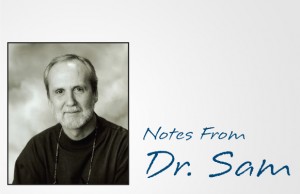Weather Watch: El Nino – The Child With An Attitude

You have probably heard the term before. It’s been a part of how we forecast the weather for at least the past 50 years since we have been keeping records for it. There are other terms you might have heard: La Nina, (little girl) and ENSO, (El Nino Southern Oscillation). The terms can get confusing, so for this article we will just focus on El Nino.
Some of you may already understand this weather phenomenon, others of you still might not be too sure. That’s to be expected as it only comes around every 3-7 years. The El Nino currently happening is one of the strongest in recent decades.
The term originates hundreds of years ago when fishermen from Peru noticed warmer than average water temperatures that were killing fish and plankton, meanwhile in other parts of South America fishermen were catching fish normally found hundreds of miles away.
The unusual warming of the Pacific Ocean in this part of the world was termed El Nino, “child” or “Christ child” since it was first observed around Christmas. The opposite of El Nino is when the Pacific Ocean water is cooler than normal. This is called La Nina or “little girl”. Both La Nina and El Nino can change the weather patterns across North America.
Every so often, a strong El Nino means all kinds of trouble for the weather here. The 2015/2016 El Nino looks to rank among the 3 strongest since 1950. The others were 1982/1983 and 1997/1998.
The abnormal warming of the equatorial Pacific waters creates pressure differences in the atmosphere which in turn alters our jet stream patterns. This is a simple explanation but its consequences are complex and extreme in some years. For instance, in an El Nino winter the jet stream usually stays across the northern part of the country keeping the coldest air across the Northwest, Rocky Mountains and Northern Plains. It usually translates to warmer than normal winters across the Deep South. This winter has fit that forecast perfectly. Record highs were reported on Christmas Eve as far north as Vermont!
The strong El Nino years also seem to have a connection to wintertime severe weather and tornadoes. Arkansas is a perfect example. In 1982, 78 tornadoes were reported in our state, some of the most devastating in December. In 1997, 45 tornadoes were reported. These two episodes rank as some of the strongest El Nino’s recorded.
Last year as the El Nino strengthened, our severe weather episodes did as well. We had only 11 tornadoes statewide at the beginning of December but by the end of the month 9 more tornadoes brought our yearly total to 20 in 2015. Still below normal for the yearly total, but December accounted for almost half of our tornado count.
The current episode is expected to continue through late winter and early spring. More normal or ENSO neutral conditions are expected by then. Whatever the case, hold on for an up and down winter with extremes of both winter storms and severe weather events.










0 comments